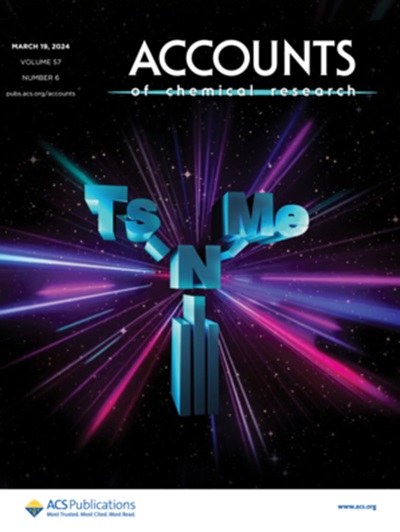Unique Ultrastructural Alterations in the Placenta Associated With Macrosomia Induced by Gestational Diabetes Mellitus
IF 16.4
1区 化学
Q1 CHEMISTRY, MULTIDISCIPLINARY
引用次数: 0
Abstract
To investigate the morphological and ultrastructural alterations in placentas from pregnancies with gestational diabetes mellitus (GDM)–induced macrosomia, term nondiabetic macrosomia, and normal pregnancies. Sixty full-term placentas were collected, and clinical data along with informed consent were obtained from pregnant women who underwent regular visit checks and delivered their newborns in Northwest Women’s and Children’s Hospital between May and December 2022. Placentas were divided into three equal groups: normal pregnancy (control group), nondiabetic macrosomia group, and macrosomia complicated with GDM (diabetic macrosomia) group. Gross morphological data of placentas were recorded, and placental samples were processed for examination of ultrastructural and stereological changes using transmission electron microscopy. Analysis of variance and chi-squared test were used to examine the differences among the three groups for continuous and categorical variables, respectively. The baseline characteristics of mothers and neonates did not differ across the three groups, except for a significantly higher birth weight in the diabetic macrosomia group (4172.00 ± 151.20 vs. 3192.00 ± 328.70, P < 0.001) and nondiabetic macrosomia group (4138.00 ± 115.20 vs. 3192.00 ± 328.70, P < 0.001) compared with control group. Examination of the placentas revealed that placental weight was also highest in the diabetic macrosomia group compared with control group (810.00 ± 15.81 vs. 490.00 ± 51.48, P < 0.001) and nondiabetic macrosomia group (810.00 ± 15.81 vs. 684.00 ± 62.69, P < 0.001), but the ratio of neonatal birth weight to placental weight (BW/PW) was significantly lower in the diabetic macrosomia group compared with that in the control group (5.15 ± 0.19 vs. 6.54 ± 0.63, P < 0.001) and nondiabetic macrosomia group (5.15 ± 0.19 vs. 6.09 ± 0.52, P < 0.001) group. In contrast, the BW/PW ratio in nondiabetic macrosomia did not differ significantly from that in the control group. Distinct ultrastructural changes in terminal villi and stereological alterations in microvilli were observed in the diabetic macrosomia group, including changes in the appearance of cytoplasmic organelles and the fetal capillary endothelium and thickness of the vasculo-syncytial membrane and basal membrane. Significant ultrastructural and stereological alterations were discovered in the placentas from pregnant women with macrosomia induced by GDM. These alterations may be the response of the placenta to the hyperglycemia condition encountered during pregnancies complicated with GDM.妊娠期糖尿病诱发巨型胎儿相关胎盘的独特超微结构改变
目的 研究妊娠期糖尿病(GDM)诱发的巨大儿、足月非糖尿病巨大儿和正常妊娠胎盘的形态学和超微结构改变。 该研究收集了60个足月胎盘,并从2022年5月至12月期间在西北妇女儿童医院接受定期访视检查和分娩的孕妇处获得了临床数据和知情同意书。胎盘被分为三个等量组:正常妊娠组(对照组)、非糖尿病巨大儿组和合并 GDM 的巨大儿组(糖尿病巨大儿组)。记录胎盘的大体形态数据,并处理胎盘样本,使用透射电子显微镜检查超微结构和立体结构的变化。采用方差分析和卡方检验分别检验三组间连续变量和分类变量的差异。 三组母亲和新生儿的基线特征没有差异,只是与对照组相比,糖尿病巨大儿组(4172.00 ± 151.20 vs. 3192.00 ± 328.70,P < 0.001)和非糖尿病巨大儿组(4138.00 ± 115.20 vs. 3192.00 ± 328.70,P < 0.001)的出生体重明显较高。胎盘检查显示,与对照组(810.00 ± 15.81 vs. 490.00 ± 51.48,P < 0.001)和非糖尿病巨大儿组(810.00 ± 15.81 vs. 684.00 ± 62.69,P < 0.001),但与对照组(5.15±0.19 vs. 6.54±0.63,P<0.001)和非糖尿病巨大儿组(5.15±0.19 vs. 6.09±0.52,P<0.001)相比,糖尿病巨大儿组的新生儿出生体重与胎盘重量之比(BW/PW)明显较低。相比之下,非糖尿病大鼠组的体重/体重比与对照组没有显著差异。糖尿病巨绒毛症组观察到末端绒毛明显的超微结构变化和微绒毛的立体学改变,包括细胞质细胞器和胎儿毛细血管内皮的外观变化以及血管鞘膜和基底膜的厚度变化。 在 GDM 诱导的巨大胎儿症孕妇的胎盘中发现了明显的超微结构和立体学改变。这些改变可能是胎盘对并发GDM的妊娠中遇到的高血糖状况的反应。
本文章由计算机程序翻译,如有差异,请以英文原文为准。
求助全文
约1分钟内获得全文
求助全文
来源期刊

Accounts of Chemical Research
化学-化学综合
CiteScore
31.40
自引率
1.10%
发文量
312
审稿时长
2 months
期刊介绍:
Accounts of Chemical Research presents short, concise and critical articles offering easy-to-read overviews of basic research and applications in all areas of chemistry and biochemistry. These short reviews focus on research from the author’s own laboratory and are designed to teach the reader about a research project. In addition, Accounts of Chemical Research publishes commentaries that give an informed opinion on a current research problem. Special Issues online are devoted to a single topic of unusual activity and significance.
Accounts of Chemical Research replaces the traditional article abstract with an article "Conspectus." These entries synopsize the research affording the reader a closer look at the content and significance of an article. Through this provision of a more detailed description of the article contents, the Conspectus enhances the article's discoverability by search engines and the exposure for the research.
 求助内容:
求助内容: 应助结果提醒方式:
应助结果提醒方式:


